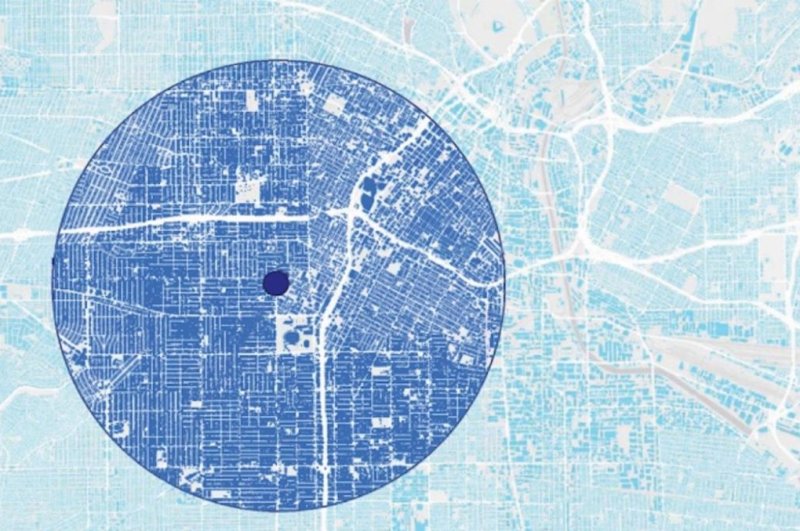A city's layout affects how much it heats up. Photo by MIT
Feb. 23 (UPI) -- Every city's heat island effect is different. According to new research out of MIT, how a city heats up depends on the layout and design of its streets and buildings.
Scientists found cities with more geometric, grid-like layouts, such as New York and Chicago, had a greater heat island effect than cities with less uniformity, like London and Boston.
While grid-like cities boast a "crystalline" texture, more chaotic cities have a "glass-like" texture. In semi-solids like glass, the relationship between particles is less rigid and more liquid-like.
Because cities feature a higher concentration of asphalt and concrete, which absorb and store the sun's heat very efficiently, they tend to heat up faster and stay warmer than their less developed surroundings. But as the latest research shows, the heat island phenomenon isn't uniform.
To study how the design of a city impacts the phenomenon, researchers analyzed the structural design of 47 different cities using satellite images. To measure the relationships between buildings in each city, scientists used a model normally designed to measure how a single atom is impacted by the external forces of its neighboring atoms.
"We use tools of classical statistical physics," Roland Pellenq, a senior research scientist at MIT, said in a news release.
The model helped assign each city a score between 0 and 1, with 0 representing a total lack of order and 1 representing a perfect crystalline structure. The cities varied from 0.5 to 0.9.
Scientists combined the structural and temperature data to determine the relationship between the two variables. The analysis -- published in the journal Physical Review Letters -- showed cities with less crystalline structures have a lesser heat island effect.
The research could help city planners design more energy efficient cities.
"If you're planning a new section of Phoenix, you don't want to build on a grid, since it's already a very hot place," Pellenq said. "But somewhere in Canada, a mayor may say no, we'll choose to use the grid, to keep the city warmer."
But previous studies have shown that there's no one-size-fits-all approach to boosting or curtailing the urban heat index, and that both sprawl and urban density can cause a city to overheat. What the growing body of research does make clear, is that how a city is designed has a measurable impact on its temperature.















